This tour is made for those who want to have a short stay in Chengdu and a deep discovery of Tibet. Before heading to Tibet, you have the chance to pay a close visit to the giant panda which is known as “living fossil” in “laid-back” Chengdu. In Tibet, you will spend several days exploring Lhasa, then go to visit the peak of the world - Mt. Everest via Gyantse and Shigatse. On your journey, you will experience all features of Tibet – holy palace and monastery, snow-capped mountain, sacred lake, devoted pilgrims etc.
Highlights of this tour:
- Visit Chengdu Panda Base to learn the daily life of giant panda and take some interesting pictures;
- Be immersed in the devoted atmosphere of pilgrimage in the Potala Palace and sacred monasteries – Jokhang Temple, Sera Monastery, Palcho Monastery...;
- Take a memorable adventure to the top of the world - Mount Everest and watch the incredibly amazing sunrise.
Tour Brief Information
- Tour price: from $2,179
- Tour code: TD-CL-10
- Tour Type: Private Customizable Tour Package
- Destination: Chengdu / Lhasa / Lhasa / Shigatse / Gyantse / Mount Everest / Lhasa
- Duration: 10 days and 9 nights
- Departure: Flexible
- Travel Theme:





- Best Time:


- Physical Level
- Tour Pace
- Max Altitude
5,200m
- Itinerary Details
- Price Guide & Booking
- Trip FAQs
- Reviews
- Make an Enquiry
Your tour - at a glance
Day 1~2 Arrival & Chengdu Tour
Day 3~5 Lhasa Arrival & Lhasa City Tour
Day 6~9 Lhasa - Gyantse - Shigatse - Everest - Lhasa
Day 10 Lhasa Departure
Itinerary Details - Day by Day
Day 1 Chengdu Arrival
Welcome to the hometown of Giant Panda! Upon arriving at the airport/train station, you will be met by your local tour guide, and then drive to your downtown hotel in Chengdu City. After the hotel check-in, you are free to take a rest or explore around on your own.
Optional Activity: go to enjoy an authentic Sichuan Cuisine dinner at a local restaurant.
-
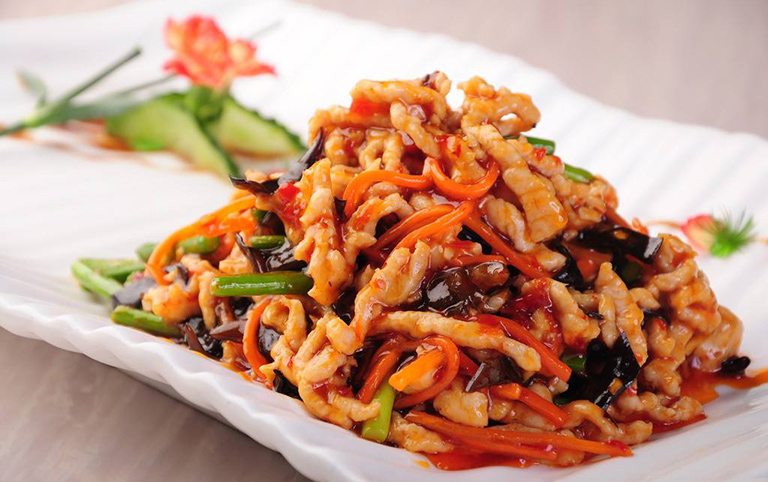 Shredded Pork with Garlic Sauce
Shredded Pork with Garlic Sauce
-
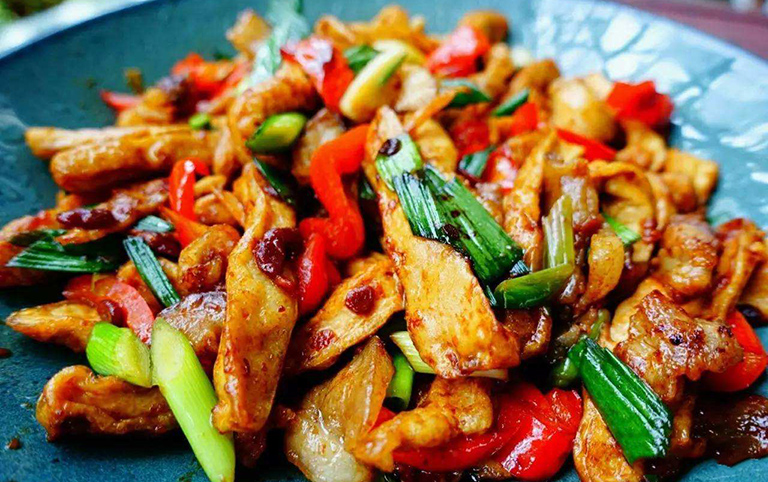 Twice-cooked Pork is delicious with oil but not greasy
Twice-cooked Pork is delicious with oil but not greasy
Day 2 Chengdu ( B, L )
Chengdu has three famous features - Giant Panda, History and Leisure Living Pace. Today, you will go to explore these tree features one by one. First is to visit the lovely Giant Pandas in Chengdu Research Base of Giant Panda Breeding, which is the No. 1 thing to do in Chengdu. You will leave your hotel early and drive about 30 minutes to the panda base so that you can catch up the great moments of pandas, such as feeding, playing, climbing tree, etc. There are different enclosures for pages of different ages, such as all around to see baby pandas, 1 year-old pandas, teenage pandas, and older pandas. Beautiful walking paths will lead you to visit the enclosures from one to next. Enjoy the happy time with pandas.
The second place to visit is the sacred Wenshu Temple which is hidden peacefully among the modern mansions. This temple is the most popular Buddhist temple in Chengdu region. It has beautiful traditional ancient architecture. The atmosphere is calm and quiet, some people are praying. There is a little garden and the monastery is very colorful and decorated.
Lastly, you are going to explore the leisure living peace of locals at Renmin Park and Jinli Street. Renmin Park, or People’s Park is the place for locals to go for a relaxing walk, meet friends, or have a cup of tea. While Jinli is the “street of tourists”. You can wander on the traditional old street to absorb the special atmosphere of Chengdu, taste local snacks, watching a performance, etc.
Optional Recommended Night Activity: watch an fascinating show of traditional Sichuan Opera & Face Changing Performance in a local theatre.
-
 A Cute Giant Panda Photographed by Our Guest
A Cute Giant Panda Photographed by Our Guest
-
 Our guests enjoyed tea at Renmin Park
Our guests enjoyed tea at Renmin Park
-
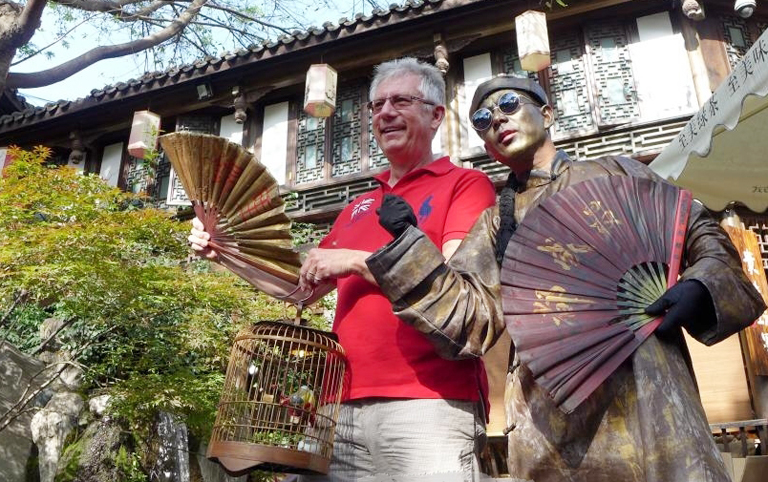 Take a photo with the "Bronze Man'
Take a photo with the "Bronze Man'
Day 3 Flight to Lhasa from Chengdu ( B )
Today, you will be free until your local guide escorts you to the airport for your flight to Lhasa (about 2 hours’ flight). Upon arriving at Lhasa Gongga Airport, you will be picked up by local tour guide at the airport hall, then be escorted to your hotel in Lhasa city in a private vehicle. The rest of the day is free for you to explore the local areas and acclimatize yourself to the air, temperature and high altitude of Lhasa.
High Altitude Acclimation Tips:1) go for some leisure walking to acclimate the high altitude but avoid strenuous activity after arrival; 2) you'd better not have bath, in case of catching a cold; 3) drink more water, and have some fruit; 4) have a good rest.
Day 4 Lhasa ( B )
Start today’s Lhasa exploration with an exciting visit to the landmark - Potala Palace which is regarded as one of the most beautiful architectural building in the world. You will climb up the palace along the zigzag stone paths with white-and-red walls to the top of the palace where you can not only appreciate the exotic Tibetan-style architecture, but also get a great view of Lhasa’s urban areas, then walk into the inner space of Potala Palace to explore the stately chapels and learn about the history of the palace.
Continuing your exploration, you will then get to Jokhang Templewhich is considered as the spiritual heart of Tibetan Buddhism. Each day, there are thousands of pilgrims coming from different places in Tibet to the temple to worship to the Buddha. This temple is also known as the “house of Buddha” because it keeps the precious Jowo Rinpoche, the life-sized (5 foot/1.5m) image of the Shakyamuni at the age of 12. The last site for today’s exploration is the famous Barkor Street. It is a circular and wide street encircling the Jokhang Temple. The local people like to walk on the street for several circles usually in the late afternoon as a daily tradition of pilgrimage. The street also has many shops selling a wide variety of traditional Tibetan goods, religious items and handcrafts.
Tips of today: 1) there are 1,080 steps up to climb to the top of Potala Palace, so don’t walk in a rush, which may cause high altitude sickness; 2) taking photos is not allowed inside the palace; 3) today you will be mainly outside, please bring some water, a hat, sun cream, and sun glasses with you.
-
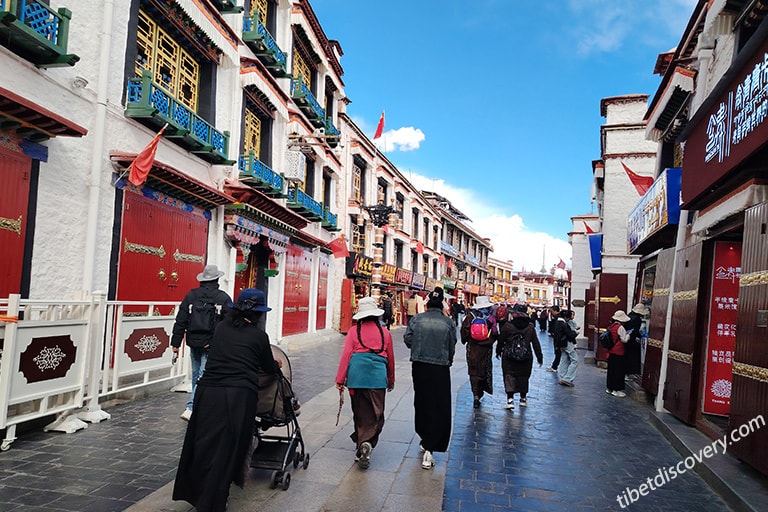 Barkhor Street
Barkhor Street
-
 Feast on the great view of Jokhang Temple Square
Feast on the great view of Jokhang Temple Square
-
 Visit the Potala Palace - the treasure of Tibet
Visit the Potala Palace - the treasure of Tibet
Day 5 Lhasa ( B )
After breakfast, you will firstly go to visit the beautiful Norbulingka which used to be the former summer palace of Dalai Lamas in the ancient time, and now is a public park. It is famous for its Potrang, the private palaces of former Dalai lamas with grandiose Tibetan architecture style. Next, drive several kilometers to the western outskirts of Lhasa to visit Drepung Monastery. Drepung, in Tibetan, means “prosperity”. Since its establishment, Drepung Monastery has always been one of the most important Buddhist monasteries in Tibet. In its heyday, there were more than 10,000 monks lived and studied in the monastery. Throughout its history, many important and famous Tibetan leaders used to study here, especially the Dalai Lamas. So Drepung Monastery is also respectfully known as the “Mother School of Dalai Lamas”.
In the afternoon, you will be taken to another famous monastery in Lhasa - Sera Monastery. It is famous for the spectacular “Buddhism Debating”. As a daily routine, the monks gather in a courtyard, and debate on the Buddhist doctrines with supplemented gestures, which is thought to be helpful to facilitates better comprehension of the Buddhist philosophy to attain higher levels of study. After enjoying the "Buddhism Debating", you will be transferred back to the city. The rest time is your own free time to rest.
The Etiquette of Visiting Monastery: 1) you shouldn’t wear short and uncover shoulders; 2) taking off your sunglasses and hat before entering the chapels; 3) taking photos is usually not allowed inside the chapels.
-
 Our Guest Visiting Sera Monasstery
Our Guest Visiting Sera Monasstery
-
 Norbulingka Park - Neubert
Norbulingka Park - Neubert
-
 First Sight of Drepung Monastery
First Sight of Drepung Monastery
Day 6 Lhasa - Gyantse - Shigatse / 360km, About 8hrs' Driving ( B )
Today, you will leave Lhasa and drive about 8 hours to Shigatse, the second largest city in Tibet. It may be a long journey, but there are many things to do along the road. The first site you will reach is the holy Yamdrok Lake (altitude: 4,400m). As the largest fresh lake in the northern of the Himalaya Mountains, it spreads about 675 square meters from south to north, like an eardrop lying in the arms of snow-capped giant mountains. Viewing from a distance, you can see fertile pastures full of yaks and sheep, and some small Tibetan villages along the lakeshore. Keeping driving not so far from Yamdrok Lake, you will see the imposing Karola Glacier (altitude: 5,045m) towering aloft on the right side of the road.
Continuing your trip, you will get to the historical city of Gyantse. Feel hungry? Have a good lunch in the town, then go to visit the mysterious Palcho Monastery (altitude: 4,040m). The monks and tradition of three important sects of Tibetan Buddhism - Sakyapa, Zhalupa and Gelukpa, peacefully coexist in this monastery. Its Kumbum, which is 35 meters high and has 76 small chapels with hundreds images of Kriyatantras , is believed to be the largest such structure in Tibet.
After the Gyantse sightseeing, keep drive about 3 hours, you will arrive at your hotel in Shigatse (altitude: 3,800m). Have a good rest!
Tips of today: 1) wear warm clothes to prevent from cold and wild; 2) pack some food and drinks with you because you will spend much time on the road.
-
 White Pagoda of Palcho Monastery
White Pagoda of Palcho Monastery
-
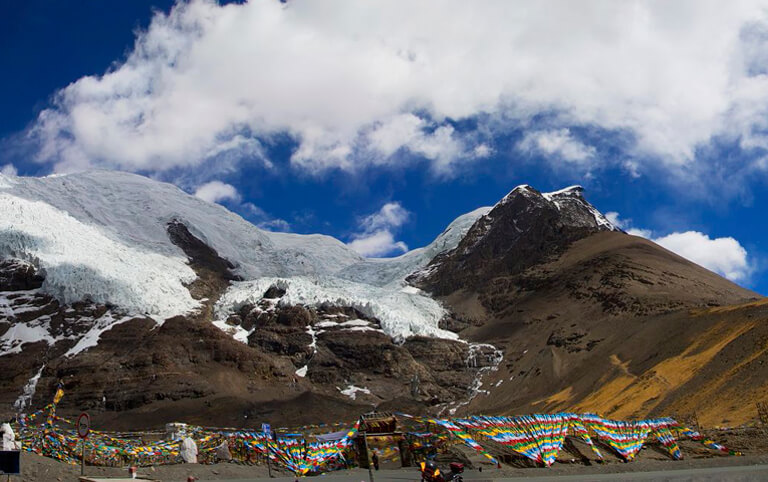 Get amazed by the stunning view of Karola Glaceier
Get amazed by the stunning view of Karola Glaceier
-
 Yamdrok Tibetan Stone Marks
Yamdrok Tibetan Stone Marks
Day 7 Shigatse - Mount Everest / 350km, About 7hrs's Driving ( B )
After breakfast, embark on your once-in-a-lifetime Mount Everest expedition. Departing from Shigatse and traveling along National Highway 318, the scenery outside the window gradually transforms from farmland to vast mountains and deserts. Upon reaching the Gyatsola Pass (5,248 meters), you will first see fluttering prayer flags and the prominent Mount Everest Nature Reserve signpost. This is one of the highest points on G318, symbolizing your official journey toward the summit of the world. Next, you arrive at the Mount Everest National Park gate, the formal entrance to the core area. The large signboard is a classic photo spot.
Following this, you will begin ascending the Gawula Pass. It is the highest, most open, and most spectacular viewing platform for the Himalayas in the world. On clear days, you can see four snow-capped peaks over 8,000 meters from here: Mount Makalu (8,463 meters, 5th highest in the world), Lhotse (8,516 meters, 4th highest), Mount Everest (8,848.86 meters, 1st highest), and Cho Oyu (8,201 meters, 6th highest), along with many peaks over 7,000 meters. Descending from Gawula Pass, you enter the famous "Everest 108 bends." Vehicles travel along zigzag roads, continuously descending with sharp turns one after another. Each hairpin turn offers a different perspective on the grandeur of the Himalayas.
After descending, you arrive at the thriving Tashi Dzong Town, also known as Everest Town. This is the most important supply point before reaching Everest Base Camp. Here, you can buy water and snacks. At the nearby eco-shuttle transfer point, you switch to the park's unified eco-electric vehicles for the final journey to Everest Base Camp (5,200 meters). When the eco-shuttle comes to a stop, the massive pyramid-shaped peak of Mount Everest stands before you, unobstructed. The remaining time is yours to enjoy up close with the world's tallest mountain. Walk to the 8,848.86-meter measurement monument for photos, gaze at the "flag cloud" drifting from the summit, and feel the peak moment of life.
In the evening, stay overnight in a tent lodge at Base Camp or Rongbu Temple Guesthouse.
-
 Rongbuk Monastery on the Mount Everest
Rongbuk Monastery on the Mount Everest
-
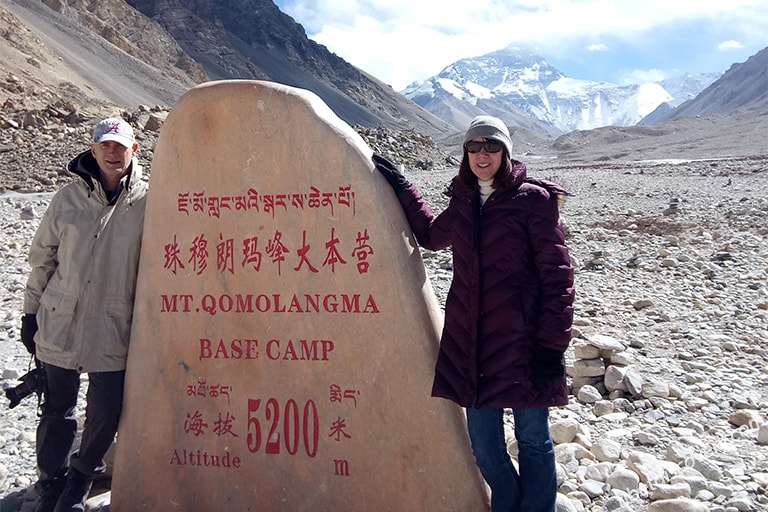 Our Guests Visiting Mount Everest
Our Guests Visiting Mount Everest
-
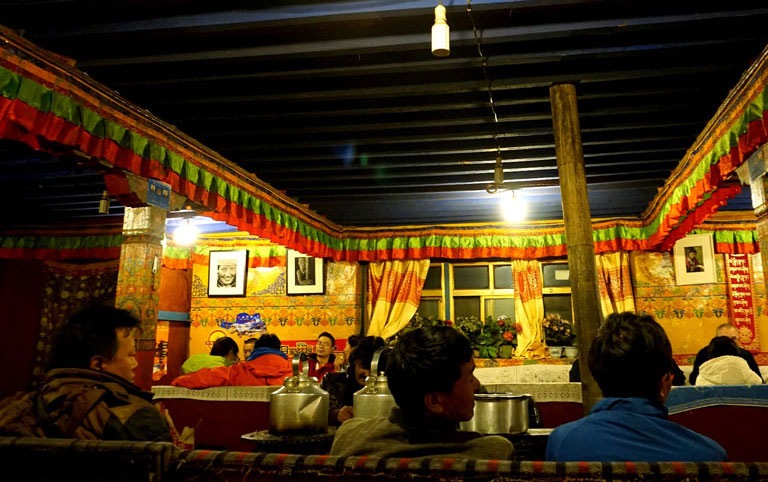 Dining Room in Rongbuk Monastery Guesthouse
Dining Room in Rongbuk Monastery Guesthouse
-
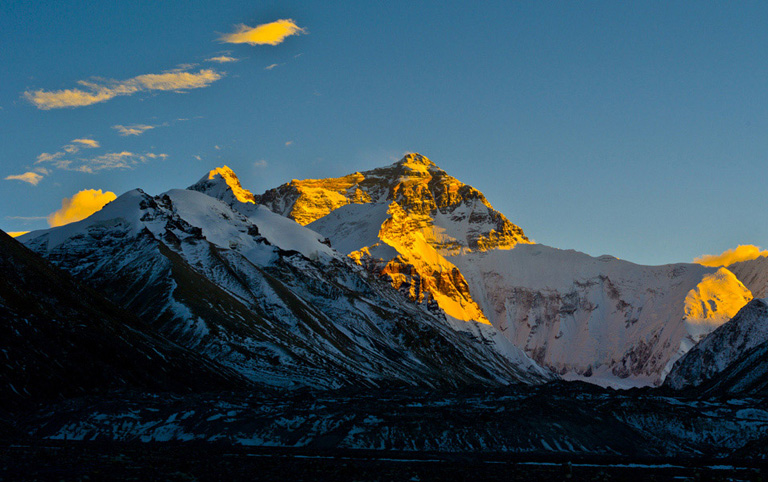 Sunset on Mount Everest
Sunset on Mount Everest
Day 8 Mount Everest - Shigatse / 350km, About 7hrs' Driving
Wake up early to enjoy the marvelous sunrise on the peak of the world from Rongbuk Monastery. The top part of the Mount Everest is always covered by snow all the year round, and when the sun shines on the mountain, the peak is like a giant white pyramid, which is one of the most famous sceneries of Mount Everest. In bright days, you can also see a wisp of cloud hanging above the top of Mount Everest. It flies eastward in the fast western wind just like a flapping flag. This unique phenomenon is the spectacular “Cloud Flag”. The cloud will change from surging waves into a thin cooking smoke or from galloping steeds into the mysterious veil of a goddess.
Till now your Mount Everest adventure is about to end. The rest of today is to drive back to Shigatse City. You will get to Shigatse in the afternoon, then take a visit to the official seat of Panchen Lama - Tashilhunpo Monastery which is also the largest and most influential Gelug Monastery in Shigatse prefecture. Here you will see a giant statue of Future Buddha, the largest one of its kind on earth ( 26.2 meters high and 11.5 meters wide ), decorated with precious pearls, turquoises, corals and ambers.
Accommodate in Shigatse City.
Tips of today: 1) the sunrise usually starts around 6:30 am to 7am on Mount Everest; 2) keep warm all the time.
-
 Qamba Buddha
Qamba Buddha
-
 Charming Sunrise on World Highest Mountain
Charming Sunrise on World Highest Mountain
Day 9 Shigatse - Lhasa / 280km, About 6~7hrs' Driving ( B )
Today you'll drive back to Lhasa (5 hours) along the legendary Yaluzangbu River, the mother river of Tibet. On the halfway, you will take a visit to Nyemo Tunba which was the home of Tunmi Sangbuzha who invented the Tibetan character as well as the famous Tibetan Tibetan Incense. Here in Tunba, you also have a chance to witness the process of making Tibetan Incense with water mill. At the same time, the scenery here is fabulous - ancient cypress trees, green willows, murmuring river...
Leave Tunba, keep driving back to Lhasa. Take a good rest in Lhasa.
-
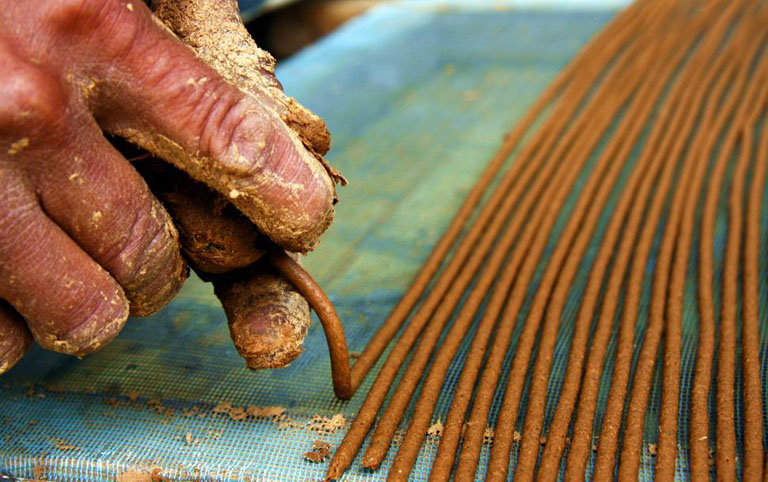 A worker is making Tibetan Incense
A worker is making Tibetan Incense
Day 10 Lhasa Departure ( B )
Today is free for you until your tour guide transfer you to the airport in time for your flight or drop you off at Lhasa train station.
Tips of Today: 1) please pack your luggage carefully, especially for small things like camera charger, power adaptor, mobile phone, phone charger, wallet and towel; 2) if your flight is arranged in the afternoon, please make sure you check out the hotel before 12pm.
Useful Trip Notes
Recommended Tibet Group Tour Packages
Escorted by a skilled driver and companied by a professional local tour guide to organize all the activities, all you have to do is to enjoy your fantastic Tibet journey.Following are some other recommended Tibet group tour packages that you may be interested in. You can also contact us to customize a trip if you want..
-

Beijing / Lhasa
8 Days to See the Harsh Contrasts of Beijing and Tibet
Highlights: Forbidden City, Great Wall, Potala Palace, Barkhor Street
-

Shanghai / Lhasa
8 Days Lifetime Tibet Train Tour from Shanghai
Highlights: Yu Garden, Qinghai Tibet Railway, Potala Palace, Jokhang Temple
-
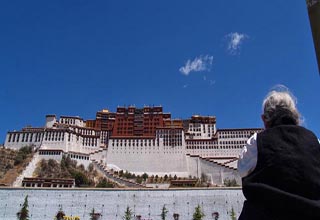
Chengdu / Lhasa
4 Days Best of Tibet Tour from Chengdu
Highlights: Highlights:Potala Palace, Jokhang Temple, Sera Monastery






 Karen
Karen Wonder
Wonder Jack
Jack Rita
Rita Johnson
Johnson Vivien
Vivien Wing
Wing Ariel
Ariel Leo
Leo Tracy
Tracy Evelyn
Evelyn April
April Phoebe
Phoebe Kelly
Kelly Shirley
Shirley Reya
Reya Juliet
Juliet Elk
Elk Samantha
Samantha Felix
Felix Sean
Sean